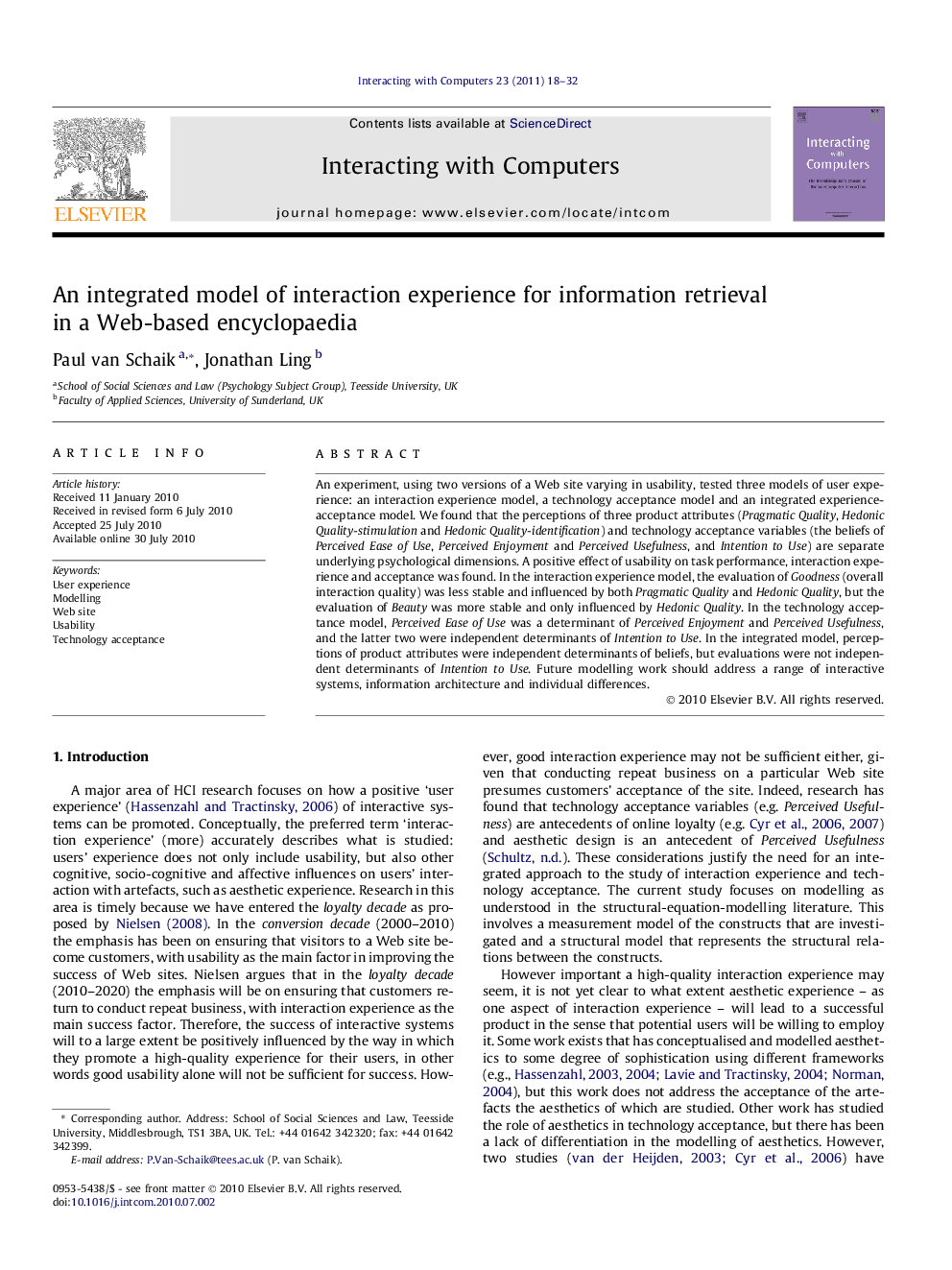| Article ID | Journal | Published Year | Pages | File Type |
|---|---|---|---|---|
| 551755 | Interacting with Computers | 2011 | 15 Pages |
An experiment, using two versions of a Web site varying in usability, tested three models of user experience: an interaction experience model, a technology acceptance model and an integrated experience-acceptance model. We found that the perceptions of three product attributes (Pragmatic Quality, Hedonic Quality-stimulation and Hedonic Quality-identification) and technology acceptance variables (the beliefs of Perceived Ease of Use, Perceived Enjoyment and Perceived Usefulness, and Intention to Use) are separate underlying psychological dimensions. A positive effect of usability on task performance, interaction experience and acceptance was found. In the interaction experience model, the evaluation of Goodness (overall interaction quality) was less stable and influenced by both Pragmatic Quality and Hedonic Quality, but the evaluation of Beauty was more stable and only influenced by Hedonic Quality. In the technology acceptance model, Perceived Ease of Use was a determinant of Perceived Enjoyment and Perceived Usefulness, and the latter two were independent determinants of Intention to Use. In the integrated model, perceptions of product attributes were independent determinants of beliefs, but evaluations were not independent determinants of Intention to Use. Future modelling work should address a range of interactive systems, information architecture and individual differences.
